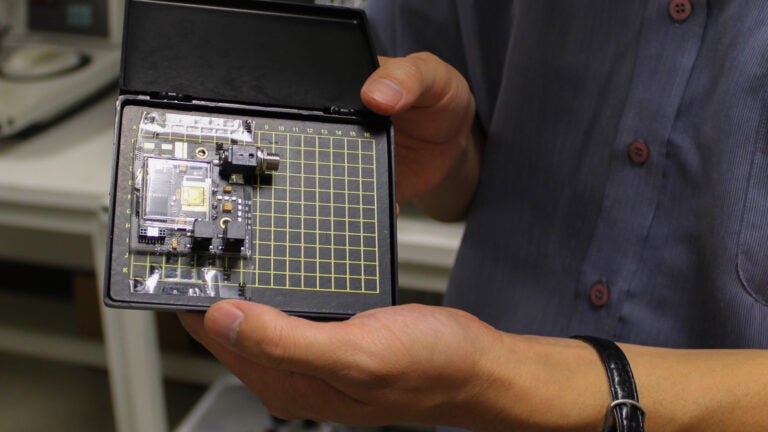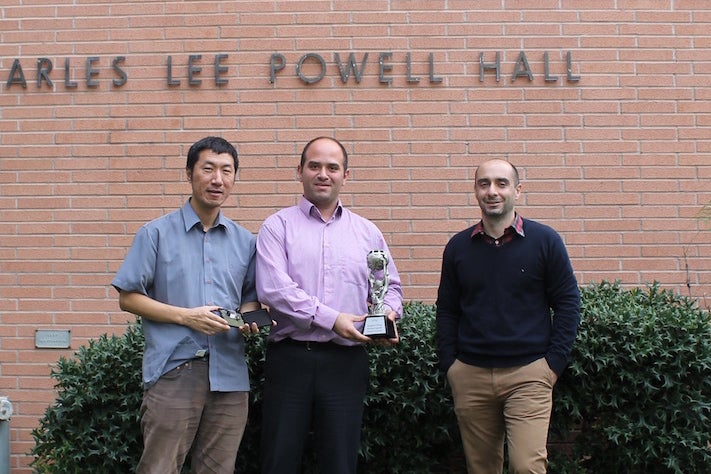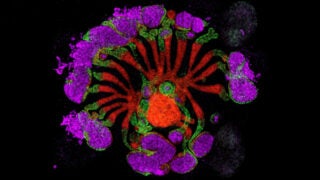
This new chip developed by USC researchers has 1,024 optical nano-antennas, more than 10 times any previous model. (Photo/Benjamin Paul)
Imagine talking to a 3-D projection of a friend on your phone
That fantastical technology could one day be a reality, thanks to research from three prize-winning USC researchers
A USC Viterbi School of Engineering team has won the Nokia Bell Labs prize for research related to drones, self-driving cars, 3-D projection and high-speed optical communications.

USC Professor Hossein Hashemi, research associate SungWon Chung and PhD candidate Hooman Abediasl, all from the Ming Hsieh Department of Electrical Engineering, won the top prize of $100,000 awarded each year to people whose research presents “game-changing ideas” in science, technology and engineering and math.
Now in its third year, the competition attracted more than 250 proposals from 41 countries.
The USC researchers designed a new architecture allowing them to pack electronic circuitry onto a single chip.
“The winners embody the essence of Bell Labs and the Bell Labs Prize — solving the great challenges facing humankind in the coming 10 years, with disruptive solutions that think differently,” said Marcus Weldon, president of Nokia Bell Labs and Nokia’s chief technology officer.
A fantastic future?
Abediasl reflected on the team’s success.
“The fact that our skills complemented each other really well was helpful,” he said. “Professor Hashemi brought the initial vision and managed the project. I developed the core technology from scratch and SungWon brought it to the next generation.”
In the near future, that means drones and self-driving cars could operate at unprecedented speeds and efficiency. It also means that even more futuristic technologies just got closer to becoming a reality.
Imagine a kind of 3-D FaceTime with your smartphone where instead of speaking to a simple screen, you’re talking to a three-dimensional projection of a friend. Remember that Return of the Jedi scene in which the rebels bring up the 3-D specs of the Death Star and show everyone the location of its weak point?
Yes, that may be where the research could one day be heading.



